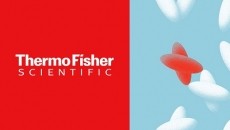At the interface of man and machine
European industrial plants, according to Frost and Sullivan, as
sectors such as the pharmaceutical industry try to reduce the
number of operators per machine.
While the push for more efficient industrial plants has been growing in Europe, the number of operators per machine has been reducing sharply over the past decade. With fewer operators, the need for competent operation and monitoring of systems has intensified.
HMI devices allow easy monitoring of complex manufacturing systems, according to F&S research analyst Gabriela Martinho, freeing up companies to focus on "more value-added operations such as speed-to-market, reliability and the capability to develop new products".
Requirements for close monitoring of equipment and processes to comply with strict regulations is stimulating HMI investment in the pharmaceuticals industry, she noted.
At present, manufacturing industries continue to be the largest application sector for HMIs, though process industries are fast catching up as they catch on to the benefits of the system in complying with regulations, gain better control over operations and increase production rates.
This process is being helped by the incorporation of some of the more traditional supervisory control and data acquisition (SCADA) features in new HMI systems that increase the flexibility of manufacturing systems. Meanwhile, expanding acceptance of PC-based open platforms is boosting end-user demand for software-based HMIs.
"To maintain Europe's edge in the fiercely competitive global market, which has been affected by the shift of manufacturing to low wage locations, high-tech manufacturing with a higher level of automation is necessary," notes the report.
And flexible manufacturing systems permit reduced order quantities, mass customisation and just-in-time production, all of which help to cope with rapid changes in the distribution of output volume over time.
Graphic operator interfaces are currently the largest segment in the HMI market and had a revenue share of 42.6 per cent in 2003. Their popularity relies on their broad functionality and easy connection into communication networks, according to F&S, as well as their flexibility and ease of use compared to text-based systems.
The second largest HMI product segment is touch screen operator interfaces, which eliminate keyboard, mouse and other peripheral devices.
"Continued technology advance in HMI design is likely to promote robust growth in this mature market over the next few years," says the report. "As end users shift away from pushbuttons and knob systems to easy-to-use and more flexible solutions, demand for devices that can be easily connected into communication networks is projected to expand.
The declining prices for thin film transistor (TFT) and touch screen technologies will also stimulate strong sales for modern HMIs, which incorporate these technologies, it notes.
For more information on this report, called European Human Machinery Interface Markets and priced at $6,250, visit F&S' website.















